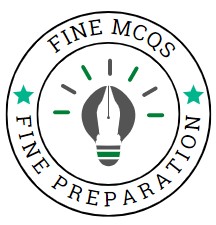FPSC
ASSISTANT DIRECTOR FIA 2011 Paper
______________________________
1. A unit of length equal to the average distance
between the earth and sun 1s called
(a) Light year
(b) Parallax
(c) Parsec
(d) Astronomical unit
(e) None of these
2. An eclipse of the sun occurs when:
(a) The earth is between the sun and the moon
(b) The sun is between the earth and the moon
(c) The moon is between the sun and the earth
(d) The earth casts its shadow on the moon
(e) None of these
3. The ozone layer protects the e~rth from rays the sent by the sun:
(a) Radioactive rays
(b) Infrared rays
(c) Gamma rays
(d) Ultraviolet rays
4 The ozone layer is present about 30miles (50km) in atmosphere above earth. The stratum (layer) of atmosphere in which ozone layer lies is called as:
(a) Exosphere
(b) Mesosphere
(c) Troposphere
(d) Ionosphere
(e) Stratosphere
5. The planet of the soMlar system which has maximum numbers of moon is:
(a) Jupiter
(b) Venus
(c) Saturn
(d) Uranus
(e) None of these
6. Sun is a:
(a) Planet
(c) Satellite
(e) None of these
(b) Comet
(d) Aurora
7. The age of Solar System Is:
(a) 4.5 billion years
(b) 5.5 bllllon years
(c) 8.5 billion years
(d) 7.5 bllllon years
(e) None of these
8. Which rocks are formed by the alteration of pre-existing rocks by great heat or pressure?
(a) Igneous rocks
(b) Sedimentary rocks
(c) Metamorphic rocks
(d) Acid rocks
(e) Basic rocks
9. The most abundant natural Iron oxides are:
(a) Magnetite and Pyrite
(b) Magnetite and Bauxite
(c) Hematite and Pyrite
(d) Hematite and Magnetite
(e) Hematite and Bauxite
10. The most abundant elements in sea water
are:
(a) Sodium and Potassium
(b) Sodium and Calcium
(c) Sodium and Chlorine
(d) Chlorine and Iodine
(e) Magnesium and Sulphur
11. An electric current can produce:
(a) Chemical effect
(b) Magnetic effect
(c) Heating effect
(d) All of these three
(e) None of these
12. The unit of home electricity energy
consumption is:
(a) Watt hour
(b) Kilowatt hour
(c) Joule hour
(d) Kilojoule hour
(e) None of these
13. The magnet always points in the same direction, if move freely i.e. towards north and south poles, because of:
(a) Gravitational field
(b) A lot of metals deposits on north and south poles
(c) Due to attraction of north pole and repulsion of Western pole
(d) Earth is a huge magnet
(e) None of these
14. When sound is reflected from floor, ceiling or a wall, it mixes with the original sound and change its complexion, it is called as
(a) Sound
(b) Echo
(c) Reverberation
(d) Noise
(e) None of these
15. The speed of sound in dry air at 20″C is about
Federal Investigation Agency (FIA)
(a) 130 meters per second
(b) 230 meters per second
(c) 330 meters per second
(d) 430 meters per second
(e) None of these
16. The speed of llght In vacuum Is about
(a) 300 Mllllon meters per second
(b) 300 Mllllon meters per hour
(c) 300 Million kilometers per second
(d) 300 Million kilometers per hour
(e) None of these
17. The time light takes from Sun to reach Earth
is:
(a) 8 minutes
(b) 25 minutes
(c) 45 minutes
(d) 60 minutes
(e) None of these
18. Light from Sun travels a distance before it
reaches Earth:
(a) 50 Million Km
(b) 100 Million Km
(c) 150 Million Km
(d) 200 Million Km
(e) None of these
19. The most suitable thermometer for measuring
the boiling point of water is:
(a) Mercury thermometer
(b) Alcohol thermometer
(c) Bimetallic thermometer
(d) Liquid crystal thermometer
(e) None of these
20. The density of water is greatest at:
(a) 32°c
(b) o·c
(c) 4″C
(d) 10o·c
(e) None of these

